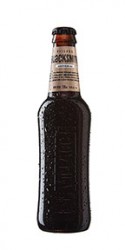by Peter Bailey
“Saskabush is pretty, yup she’s pretty flat. Lord knows I’m a Prairie boy so I’m pretty used to that,” sings Alberta musician Corb Lund.
I’m no Prairie boy myself, was born and raised in Ontario. But I moved west in the 80s, married an Alberta gal, returned to Ontario for the 90s and realized that my few years in Edmonton had turned me into a westerner. I found myself defending Alberta to Ontarians, for example, maintaining that the rednecks of small-town Alberta were no different than the rednecks of small-town Ontario. Or that driving the Prairies is less boring than driving the black spruce tunnel of northern Ontario.
I stopped saying that after driving from Edmonton to Saskatoon for a friend’s wedding. Let’s agree: they’re both tedious.
I did grow up in a small town though, so I know that the weirdness of Blue Velvet is a more accurate depiction of small town life than the wholesomeness of It’s a Wonderful Life. But small towns have changed a great deal over the past decades. I spent two weeks in February visiting Alberta towns for my day job as a librarian, from Cold Lake to Camrose, from Strathmore to Stony Plain, and I could see changes from years past.
On the negative side, towns have been homogenized, with quirky local cafes replaced by cookie-cutter Tim Hortons or Boston Pizzas. On the plus side, the people of rural Alberta are doing some pretty cool things, particularly with food production. The Tomato publisher Mary Bailey and her pal Judy Schultz foresaw this in their classic 2003 book, The Food Lover’s Trail Guide to Alberta. The Guide revealed the foodie delights of rural Alberta and predicted the local food and farm-to-table trends to come.
The late Ed McNally, Big Rock founder, understood the power of rural Alberta too. A small town Alberta lawyer and barley farmer, McNally was head of the Western Barley Growers Association in the 1980s, trying to better market barley. Back then most Alberta barley was used as cattle feed. But McNally knew that Alberta two-row barley is ideal for malting and brewing. Inspired by Fritz Maytag and Anchor Brewing, McNally decided the best way to grow a market for Alberta barley was to use it in an Alberta brewery: Big Rock was founded in 1985.
In turn, McNally inspired people across the Prairies to take excellent local raw materials and start brewing. Barley is made into malt right here in Alberta by Canada Malting in Calgary and Rahr Malting in Alix (near Red Deer). The first wave of Prairie microbrewers set up shop in cities – Alley Kat in Edmonton, Paddock Wood in Saskatoon, Half Pints in Winnipeg and Big Rock and Wild Rose in Calgary – but increasingly craft breweries are popping up in small towns. In Alberta alone there’s Ribstone Brewing, which launched in 2012 in Edgerton, and Norseman Brewing in Camrose, launched as a brewpub in 2011. Projected to open in 2015 is Half Hitch Brewing in Cochrane, Wild Craft Brewing in Lethbridge, Two Sergeants Brewing in Fort Saskatchewan, Bench Creek Brewing in Edson, and Troubled Monk Brewing in Red Deer. Next door in Saskatchewan, there’s Black Bridge Brewery in Swift Current and Nokomis Craft Ales in Nokomis.
Finally, in answer to Corb Lund, here’s Saskatoon band Rah Rah: “I am a Prairie girl, straight to the bone. I’ll cut you off on the drive back home. I spend my winters alone.”
Prairie Six-Pack
Prairie beer has come a long way from the days of Old Style Pilsner carrying the flag. Pil is brewed in Vancouver now, so give one of the new style Prairie beers a try.
Peter Bailey is pan-Canadian, comfortable drinking craft beer anywhere in this great land. He tweets as @Libarbarian.





